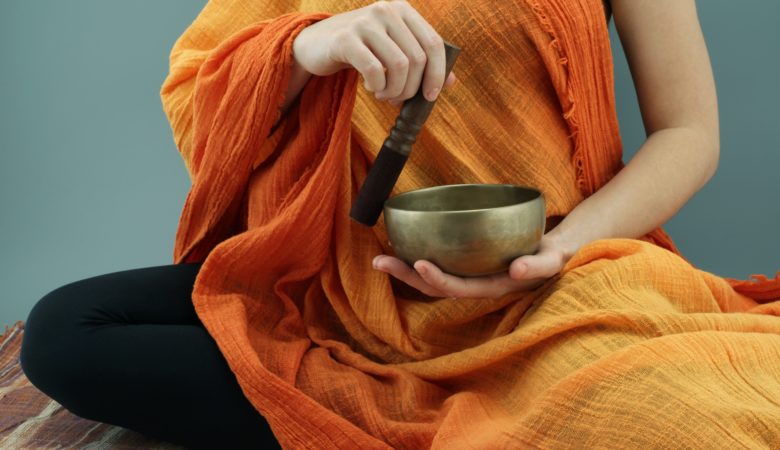Singing Bowl Sound Therapy: What Is It? Does it Work?

You may have heard singing bowls used during a massage, or during guided meditations—but what are they, exactly, and what benefits do they offer?
Singing bowls are metal bowls, usually played with wooden mallets. They’re most often made with metal alloys, but you can find them made from quartz and other materials. When they’re struck or the mallet is run around the rim, they produce rich, resonant tones. This is thought to help the listener relax more deeply. Some proponents suggest that it can even heal physical and mental ailments.
If you’re looking for a way to up your meditation game, singing bowls might be a good place to start.
Where do singing bowls originate?
Singing bowls have been part of East Asian cultures for hundreds of years. You may have seen them referred to as Tibetan or Himalayan singing bowls—it’s unclear who started using them first. Historians report that the bowls were also used to store grains, nuts and seeds and water. Some people still use them for that purpose. However, the bowls historically used were different than the ones in use today.
Today, singing bowls are popular in meditation spaces and as a method of alternative healing. You can easily purchase your own online or in stores. Different sized bowls create different tones, so many people buy more than one and “play” them together. The key is to learn how to play them properly—not too fast or slow—to create a pleasant sound. Playing the bowls improperly can create discordant sounds, which actually increase anxiety.
Luckily, you don’t have to be a virtuoso to use singing bowls. With a little practice, anyone can create the resonant tones they’re famous for.
Benefits of singing bowls
One of the most popular uses for singing bowls is during meditation. Practitioners suggest that the act of creating sound is a way to help cut the chatter in your brain. As you focus on the sounds the bowls create, you’ll be naturally guided into a deeper meditative state. This is a great tool for anyone who struggles to focus during meditation—there’s a physical element from the sound vibrations, which can help you stay fully in the moment.
This study suggests that singing bowls “may be a feasible low-cost low technology intervention for reducing feelings of tension, anxiety, and depression, and increasing spiritual well-being.” In turn, this can help reduce the incidence of stress-related diseases, like heart disease and diabetes. Their calming effects may even help people deal with substance abuse. “The tension subscale in particular displayed highly significant effects for participants post-meditation, thus providing support to the hypothesis that a sound meditation would increase feelings of relaxation and decrease feelings of stress. Additionally, depressed mood and anxiety scores on the HADS were significantly reduced post-meditation compared with pre-meditation.”
All of that means that there is actual scientific evidence for the positive benefits of singing bowls. Whether you’re hoping to get in touch with your spirituality, reduce the effects of stress on your body or just want to be able to meditate without mentally running through your to-do list, this is an inexpensive and easy way to help.
There are also other benefits, which haven’t been scientifically proven yet. Some people claim that the bowls change brain waves, reduce pain and “balance and harmonize” the body’s energy systems. While this might be true, there’s currently no evidence of its accuracy.
A word of caution
Singing bowls may not be appropriate for pregnant people, those prone to headaches or people with epilepsy. The vibrations and sound can trigger headaches and seizures, and the effects of the sound vibrations on pregnancy is unknown. Better to be safe than sorry.
Do singing bowls work? Should I try them?
As you read earlier, singing bowls have been scientifically proven to help reduce stress and tension. Online retailers sell them for an average of $25 (there are both more and less expensive options, depending on what you’re looking for), which means that they’re an affordable tool for just about anyone. To see if the sounds are pleasant for you, try listening to one of these videos first.
If you’ve been struggling to focus during meditations, and want to try sound therapy for further relaxation, getting a singing bowl could help. As long as you don’t have any of the contraindicated conditions, it’s a safe and easy way to enhance your meditation practice.

